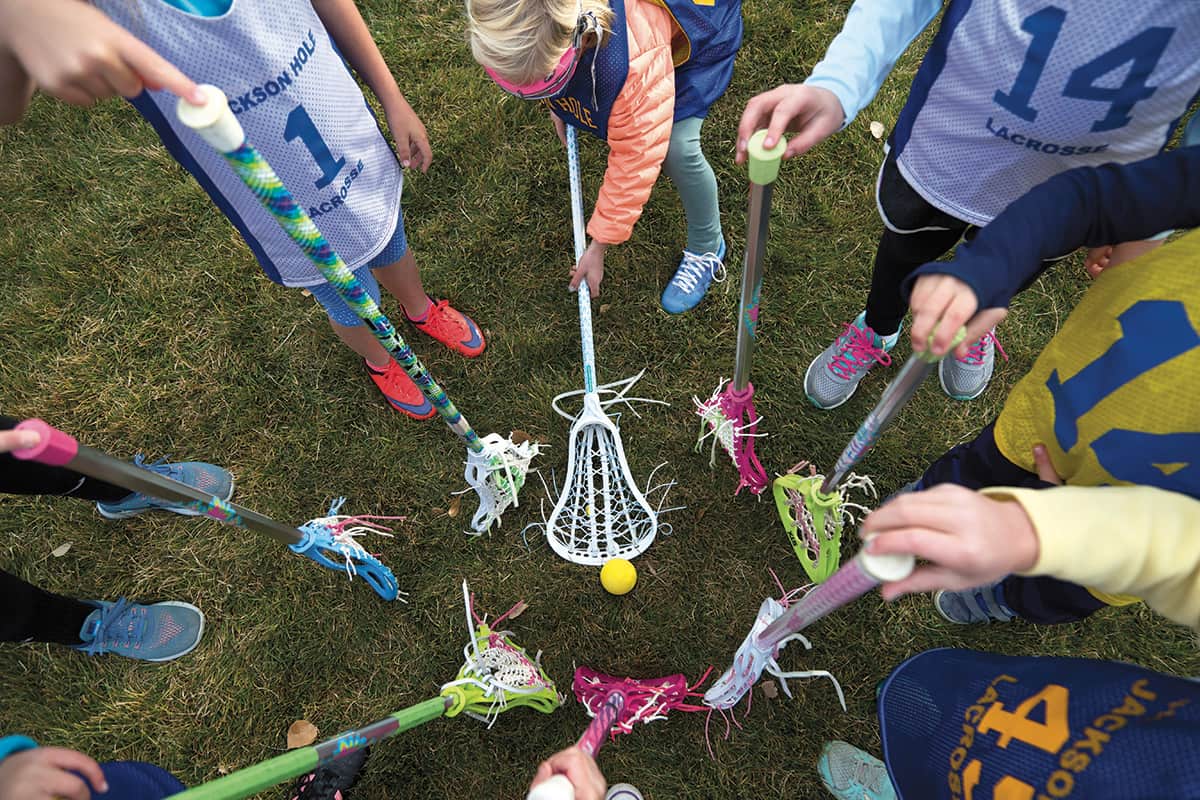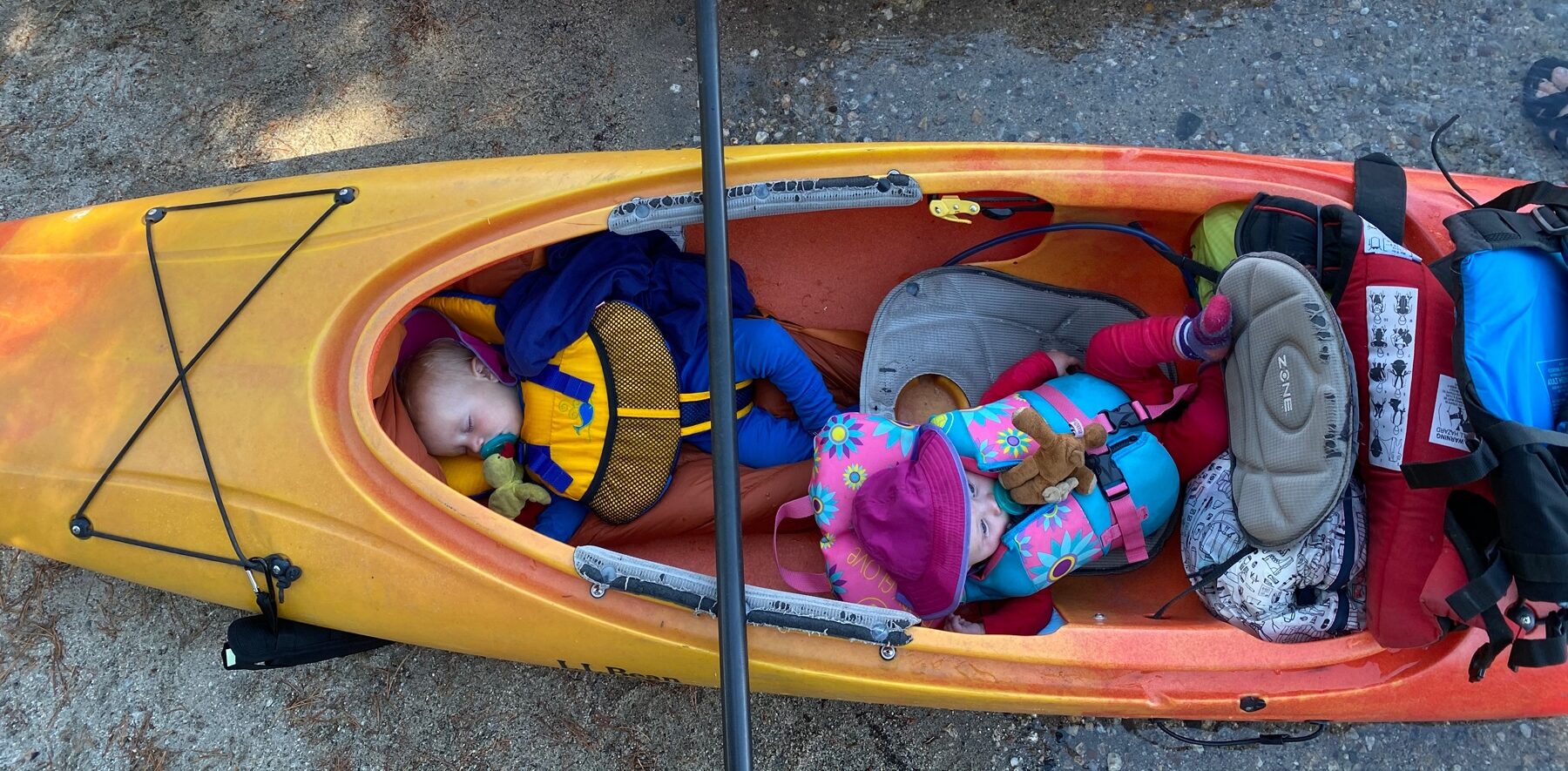By Tibby Plasse // Photograph by Rugile Kaladyte
–
Looking back on my childhood schedule, I see that I was at tennis before school and lacrosse after school (followed by countless hours in the horse barn). I couldn’t wait to leave team sports! And I was so relieved when I finally went to college and could just go on a bike ride for fun.
Then, a few years ago, my friends found out I could hold a goalie stick. And there I was, lacing up my skates for the first time in two decades. The locker room smelled the same, but the workout and the team play were so much more enjoyable than what I remembered.
When it comes to kids and team sports, nearly any middle school teacher will comment on the energy level of that age group. Ironically, though, instead of embracing the vibrancy of growing children and changing hormones, our culture tends to funnel young athletes into competitive channels based on long-term goals and skills, with, or without, fun included.
I connected with coaches from four different sports—soccer, ice hockey, kayaking, and baseball—to see how the equilibrium is kept in check. In the process, I learned that most coaches want the fun and the experience to override the competitive aspect of sports.
Cathy Thomas of Teton Football Club soccer told a story that reminded me of how important the support of a team is: One of her team’s strongest defensive players sprained her ankle last season. With this key player sidelined, the other team members were nervous heading into their next game. Cathy gathered the girls before the match, went over the lineup, and told them, “This is your chance. At any time, someone can get hurt. We need to step up and support each other.” The girls went on to win the game. “Through their confidence on the field, they found a rhythm and trusted one another,” Cathy explains. “With twelve-year-old girls, their peers are their biggest critics, and also their [biggest] cheerleaders.”
The Push to Be Pro
Critics and cheerleaders come in all forms, including parents. Veteran youth coach Brady Johnston explains that parents who didn’t, or don’t, participate in the sport their kids are engaged in don’t ask the same questions or apply the same pressure as those who did, or do. Johnston, who has coached for the Jackson Hole Ski Club, for the Jackson Hole Kayak Club, and at Fort Lewis College, is the founder of the nonprofit Teton Rock Gym in Driggs.
“These [non-participant] parents would only ask, ‘What did you learn?’ or ‘Did you have fun?’,” Johnston says. “On the flip side, those kids who do have their parents’ push, go farther.” He says that, because of the strong drive coming from the athlete’s support network, about 20 percent of the kids could be Olympic bound. Yet out of that 20 percent, only about one in ten actually enjoys what their athletic ability enables them to do.
The journal of the American Academy of Pediatrics’ Council on Sports Medicine and Fitness published an article by Dr. Joel S. Brenner on pediatrics and sports. “Overuse injuries, overtraining, and burnout among child and adolescent athletes are growing problems in the United States,” Dr. Brenner wrote. “The goal of youth participation in sports should be to promote lifelong physical activity, recreation, and skills of healthy competition.” This sobering analysis underscores that all too often the child’s goal is skewed by an adult’s goals (either those of a parent or a coach). And as more athletes play competitively at younger ages, there is more pressure to grab a piece of the “professional pie,” with college scholarships or Olympic dreams on the line. Dr. Brenner’s article also reveals the slim chances of going pro: Fewer than one-half of one percent of high school athletes will go on to achieve professional status.
Your Mind, Your Body
In order to be a strong team player, you need to intuitively know what your teammates’ next move will be. Certified mindfulness coach Michelle Visser calls this “attunement.” Visser works at the elementary school level as an outside provider, and is also on the staff of Teton Valley Community School. “If you’re watching a soccer game, you can see the players are not always using a dialogue to communicate with other players, but are working with a knowing awareness of their teammates, their strengths, and their reactions,” Visser says, adding that any successful team that makes it from the beginning of the season to the championships is playing mindfully.
How does this happen?
First, athletes must allow themselves to enjoy the sport. “You need to return to the actual physical movement of what you’re doing and what you love about what you’re doing,” says Visser. “Being able to notice a difference [in how you feel] at the end of a season versus the beginning—when your mind feels good and clear—gives recognition to the physical response.”
When teaching mindfulness to a student, Visser begins with the breath. Notice the quality of the breath. If it’s short, you’re anxious. If it’s deep, you’re finding enjoyment. As the practice furthers, take a body scan. Create more ease and quality breath, as you check in with your body. Really focus on all areas of your body: legs, jaws, neck, etc.
Sounds like yoga, right?
Well, yoga is a mindfulness practice and can help anchor, or “ground,” your body. “In yoga, there’s an opportunity to evaluate where your body is in space,” explains Visser. And as this awareness of one’s foundation develops within the individual, the team’s awareness will grow at the same time. “Awareness comes through demonstration and affirmation,” Visser says. “A teammate can say to another, ‘I see what you’re doing. What do you see yourself doing?’” This kind of attunement practice can change how the team members interact with one another.
Life Skills: The Ultimate Takeaway
There’s no question that enhanced communication, shared workload, and a support network are ingredients of a successful team environment. For many adults, their teams are in offices. Yet, unlike in the business world, playing on a sports team fosters life skills that take precedent over revenue.
Mike Sullivan coaches baseball and hockey and plays hockey in Jackson’s adult men’s league. “I grew up in Queens and played street hockey, basketball, whatever we could with 120 kids on 156th Street,” he recalls. “I don’t think that culture exists anymore. No one can just go shoot hoops.” Yet he extols the power of youth sports. “It gives kids the ability to handle adversity and deal with conflict resolution. Kids need to figure it out and—sure—sometimes it’s going to be awkward.”
Adults, like kids, also need the opportunity to play together. As an adult athlete, Sullivan plays because he loves the people he plays with. “They’re really good guys, not just hockey players; that’s why I play. I get to play hockey at a high level and I play because I love it.”
Former Minnesota Vikings punter Chris Kluwe wrote an essay for Rolling Stone magazine in 2015. In an honest confession, he opened the door to the NFL locker room, admitting that it is the only thing he misses about professional ball. “Inside an NFL locker room, you will not find a sole collection of meatheads smashing their skulls into each other until blood streams from their noses. You will not find an isolated gathering of erudite scholars discussing the latest findings from NASA, and what that might mean for the global economy. You will not find just a quarrel of rednecks discussing fishing lures and shotgun merits, nor only huddled hunches of nerds debating the merits of the latest AAA video game release. You will find every single one of these, and many more besides, because the interior of an NFL locker room is made up of individuals, none of whom are easily crammed into a single box, save one: The common trait of football aptitude.”
You can take a sport with you for life. And returning to a team sport gives you a little hiatus in which you can forget about everything that’s off the field. To just enjoy being in our bodies, playing and breathing, is what it’s all about. Besides—my hockey ladies have me laughing from practice to game to carpool.
tips for athletes
Meditation: Practice meditation before a game, workout, or race. Sit or lie down in a comfortable position. Focus on your breathing, taking slow, deep breaths through your nose. Fill each area of your body with breath, starting with your feet and working up to your head. Rest in this relaxed state.
Visualization: Before a big race or game, use visualization to help with confidence. Imagine all the aspects of your upcoming event: what you’ll be wearing, the smells, the feeling in the air, your teammates, and the opposition. Then, imagine yourself performing your best, while feeling strong and relaxed.
Legs Up the Wall: A great restorative yoga move for post travel to or from a game! Lie down face up, with your butt against a wall and legs fully extended up the wall. Relax and breathe deeply, allowing the blood to flow from your legs and replenish them upon standing.
Mantras: Find a word or phrase that resonates with you. Repeat this to yourself during a run, game, or workout. Write it on your hand or post it on a mirror. For every negative thought during your event, repeat your positive mantra. Combat one negative thought with one positive mantra until you’ve changed your perspective.
* Tips adopted from CoachUp Nation




